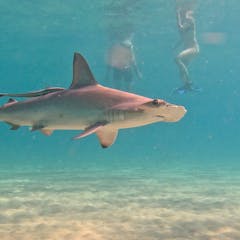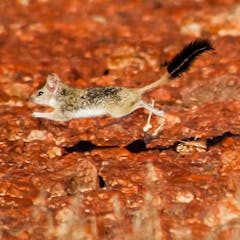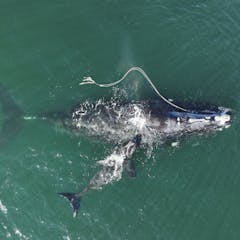
Articles on Endangered species
Displaying 1 - 20 of 461 articles

Our purpose-built “frog saunas” allow amphibians to warm up in winter and bake off chytrid infections. You can even DIY and build a frog sauna for your own backyard with our step-by-step guide.

New research documents how drones were used to track the temperatures of the Bay Islands anole lizard on the Honduran island of Utila.

Rapidly reaching net-zero is vital to avoiding the worst ravages of climate change. But doing so in a way that damages nature is self-defeating.

Not all reparations involve money. Returning unique scientific resources is also a way of showing respect and righting past harms.

When Labor took office, it promised to reverse nature’s decline. But that looks more and more like greenwashing

Reintroducing locally extinct species is a challenging affair, but with the right partnerships everyone can help make it happen.

The sad case of the Norfolk Island morepork shows we need a way to control or eradicate invasive rodents without killing native species.

All the evidence – colonial accounts and records, First Peoples’ testimony and scientific data – points to the existence of widespread tall, dense forests 250 years ago.

We compiled maps of bushfires and prescribed burns in southern Australia from 1980 to 2021 to see how fire activity is changing habitat for 129 threatened species such as mountain pygmy possums.

Young sharks are gathering at a popular beach. Here’s why we should skip our fear response and go for wonder – and protection

Even self-proclaimed ethical tourism programs can widen economic gaps and harm communities they claim to protect. Here are a few steps you can take as an ethical tourist.

New Zealand’s plants and animals are globally unique and underpin primary production and tourism. The government’s fast-tracking proposal threatens to erode the natural capital the economy relies on.

Conditions deteriorated in 2023 but were stlil relatively good for ecosystems and agriculture. Unfortunately, the alarming decline of threatened species continued.

Blink and you’ll miss it. The kowari is a charismatic marsupial carnivore that needs our help.

Even when female North Atlantic right whales survive entanglement in fishing gear, it may affect their future ability to breed, increasing the pressure on this critically endangered species.

Forest elephants are endangered in Nigeria. Habitat protection, community awareness campaigns, research and stronger regulations could save them from going extinct.

Long lifespans and slow reproduction rates make deep-water sharks and rays as vulnerable to overexploitation as whales once were. We must place them under protection to avoid extinctions.

Climate change puts pressure on British butterflies and moths - sometimes pushing them to the edges of their geographical range or shifting the timing of their life cycle so they can’t feed.

We need every tool at our disposal to stop feral cats and foxes from decimating Australia’s incredible wildlife after fires. Artificial refuges show promise.

Nature knows no borders. While decline of threatened migratory animals is alarming, there are reasons to be optimistic about international conservation efforts.
